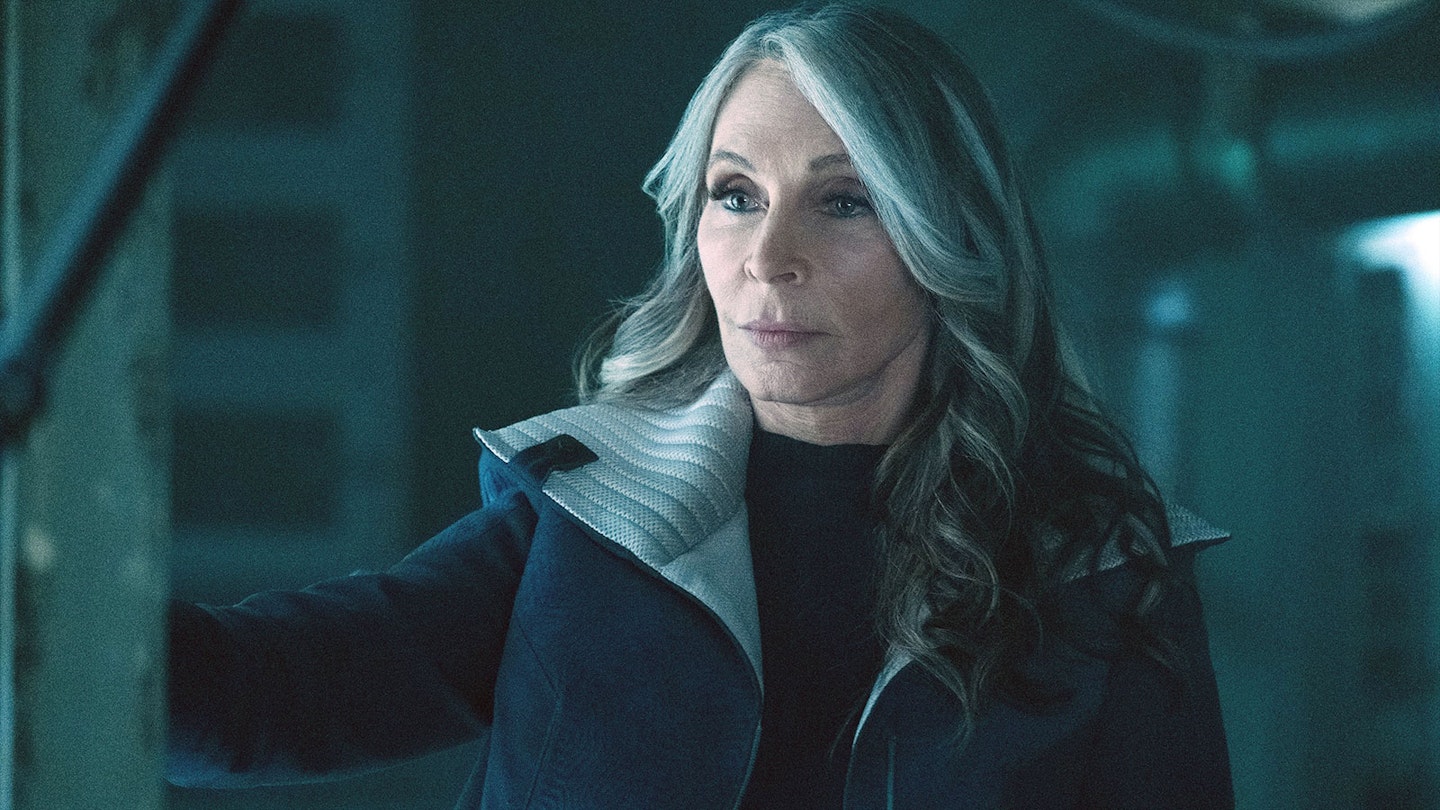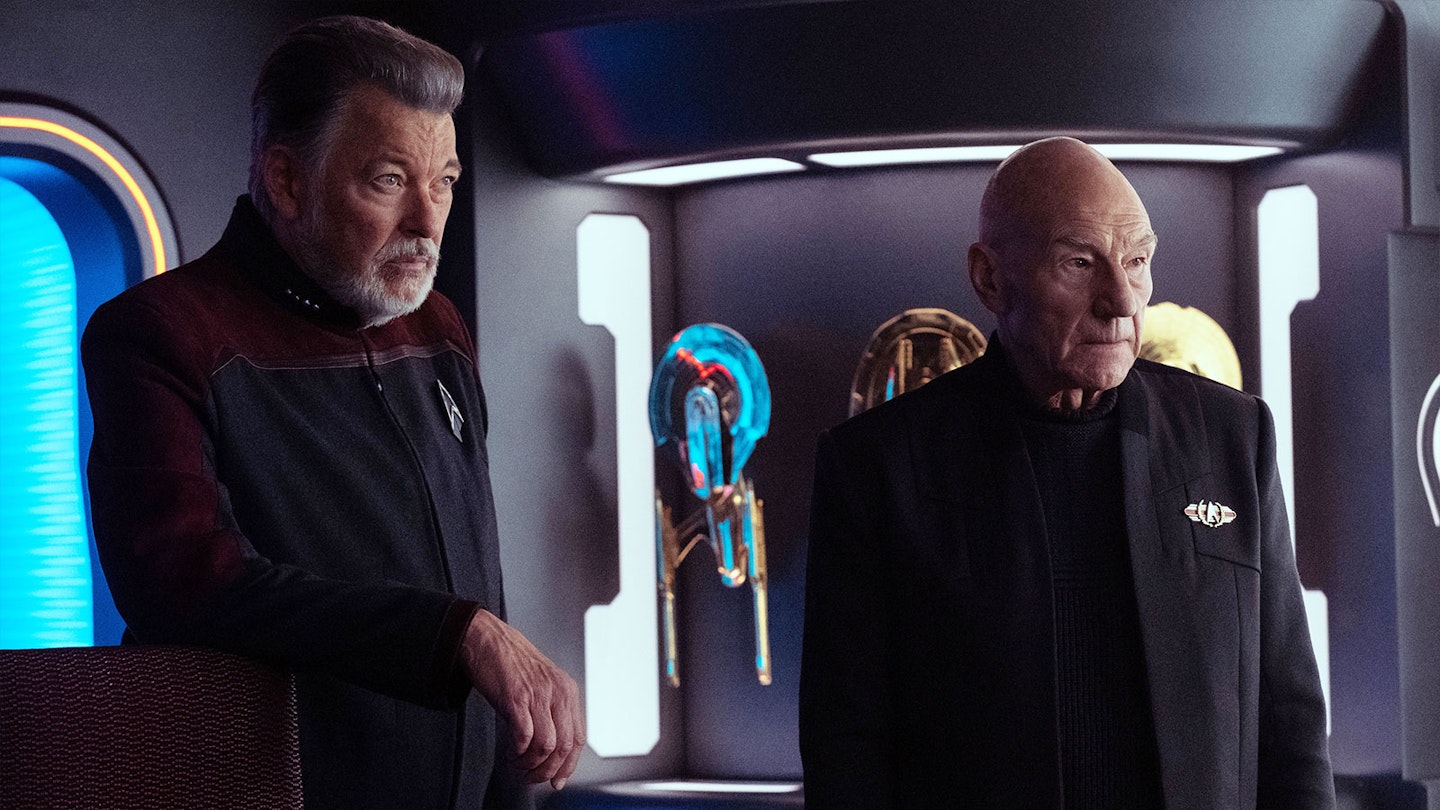Streaming on: Prime Video
Episodes viewed: 6 of 10
All starships will, at some point, stray off course. They get lost in a nebula, sucked into a spatial anomaly, or waylaid by ornery Klingons. As far as inconvenient diversions go, though, Season 2 of Picard was a big one. While it began promisingly enough, the series rapidly fell down a wormhole of recycled ideas and daft plotting that strayed perilously close to the kind of fan fiction you might stumble across on Reddit while trying to find out if there’s a Klingon word for ‘colander’ (there is not). Season 3, however, marks a significant, and welcome, course correction. Instead of attempting another reheat of Star Trek’s greatest hits, this final series is a genuine attempt to recapture the thrill of Trek in its prime.
Of course, the headline draw for this third and final season is the much-touted return of the Next Generation OGs. While Riker, Data and Troi all popped up in Season 1, here, we’re also treated to the return of Beverly, Geordie (LeVar Burton) and Worf (Michael Dorn), meaning that, save for Wesley Crusher (whose season 2 cameo is best consigned to the ice mines of Rura Penthe), all the Enterprise’s MVPs are now back on the bridge. It’s to the credit of now solo showrunner Terry Matalas that beaming in this many old school Next Gen-ers feels largely organic, each joining the ongoing mission at a different point, and furthering the plot — not stalling it — whilst doing so.

Picard’s latter-day relationships with Jurati, Rios, Soji et al, while well-intentioned, failed to truly sparkle across the first two seasons, the chemistry never quite there. However, with almost all of Picard’s new characters now set aside, there’s room for Starfleet legends to take centre stage, and the effect is seismic. Each exchange and sideways glance carries the weight of seven seasons, four films, and countless tie-in novels, games and comics — the sheer volume of shared experience setting phasers to ‘feels’ with surprising potency. The relationships have heft and history, weaving a rich tapestry of human emotion against which to stage the obligatory sci-fi shenanigans. Hearing how the Enterprise crew drifted apart shortly after the events of Star Trek: Nemesis strikes home like a well-placed photon torpedo, and seeing the genuine hurt in Picard’s eyes when confronting Beverly Crusher (who apparently ghosted him after a shore leave shag two decades earlier) rings true in a way that his awkward dalliance with Romulan housekeeper Laris never did.
Picard’s strongest season by far — one last trip to the final frontier with the men and women who charted it.
The story, meanwhile, hits all the beats you’d expect from classic Trek: a mysterious signal, a technologically superior foe (fronted by a superbly over-the-top Amanda Plummer, complete with evil cigar), and an assortment of unexplained and occasionally wondrous interstellar phenomena. While this is a tight, serialised story to fit the streaming age, time is even made for the ship to get stuck in an anomalous gravity well halfway through the season, neatly harking back to the show’s episodic, science-problem-of-the-week roots, while helpfully slowing down the action to allow the characterisation room to breathe.
There are new faces mixed in with the old — Ed Speleers’ Solo-esque space rogue is a welcome addition, as is Todd Stashwick’s delightfully salty Captain Shaw — but this is a show that, like its protagonist, defines itself primarily by things past. Nods and throwbacks to missions of yore dot scenes like distant stars on a viewscreen, ranging from the subtle (a familiar painting) to the very much not (important callbacks underscored by clunky use of archive footage). None prove too distracting from the overarching plot, however, enriching rather than detracting, and paying tribute to the long legacy of The Next Generation, as well as that of both Voyager and Deep Space Nine, in surprising and often delightful ways.
From the streamlined titles (complete with familiar cobalt typeface) to a score that unapologetically riffs on Jerry Goldsmith’s original theme, Season 3 finally feels of a piece with its Next Gen roots, shedding the chilly glaze of Kurtzman-era Trek for the good-natured warmth of its heyday. In doing so, it brings us Picard’s strongest season by far — one last trip to the final frontier with the men and women who charted it. The tragedy is that it took until the show’s last hurrah to finally find its groove. All good things must come to an end, but it's hard not to feel that we’re bidding farewell to Picard at the very moment it got us to engage.
